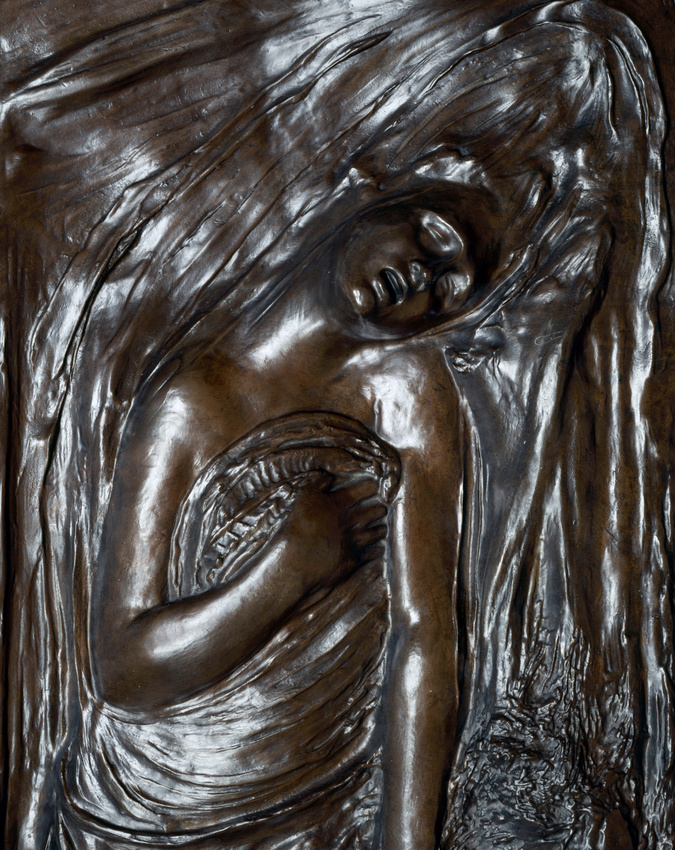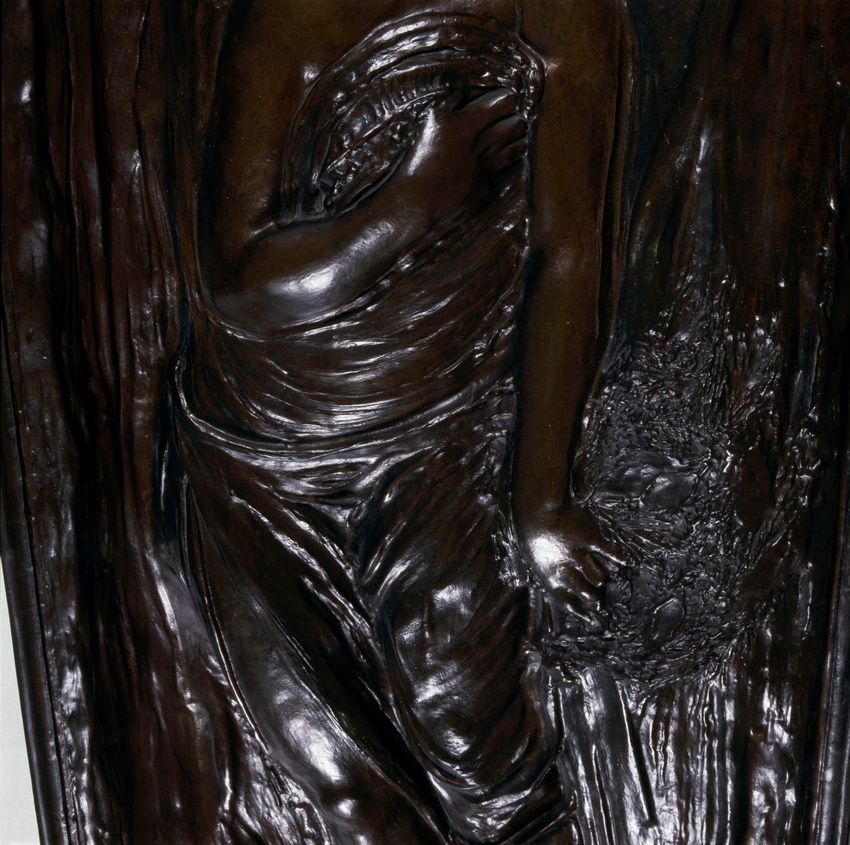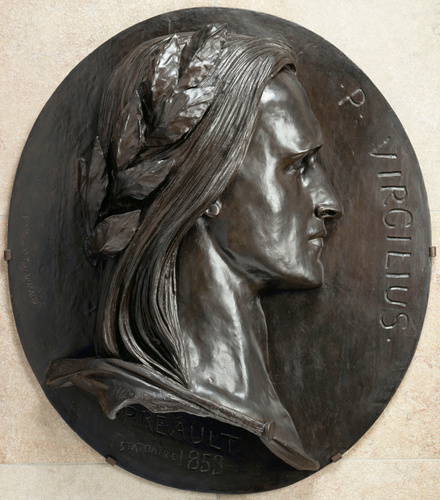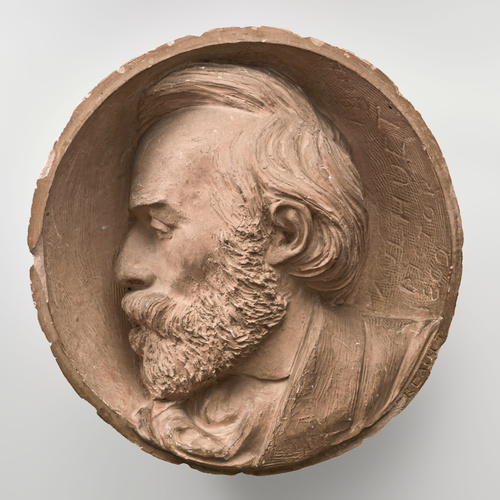Ophélie
Auguste Préault belonged to the Romantic generation. He rejected all reference to Antiquity and was not interested in illustrating the actions of famous men or mythological or allegorical subjects. On the contrary, like most of the Romantic artists, he was passionately fond of the author of Hamlet and has borrowed his subject from Shakespeare.
Ophelia is shown drifting lifeless on the water. With closed eyes and parted mouth, she escapes the stiffness of death. The waves intermingle with the folds of the wet sheet wound around the girl, emphasising the curve of her limbs. Designed like a funerary plaque from the Middle Ages or the Renaissance, the sculpture is nonetheless presented as a picture. Its sad, poetic mood is typical of the Romantic artists' reading of the work of the English playwright.





